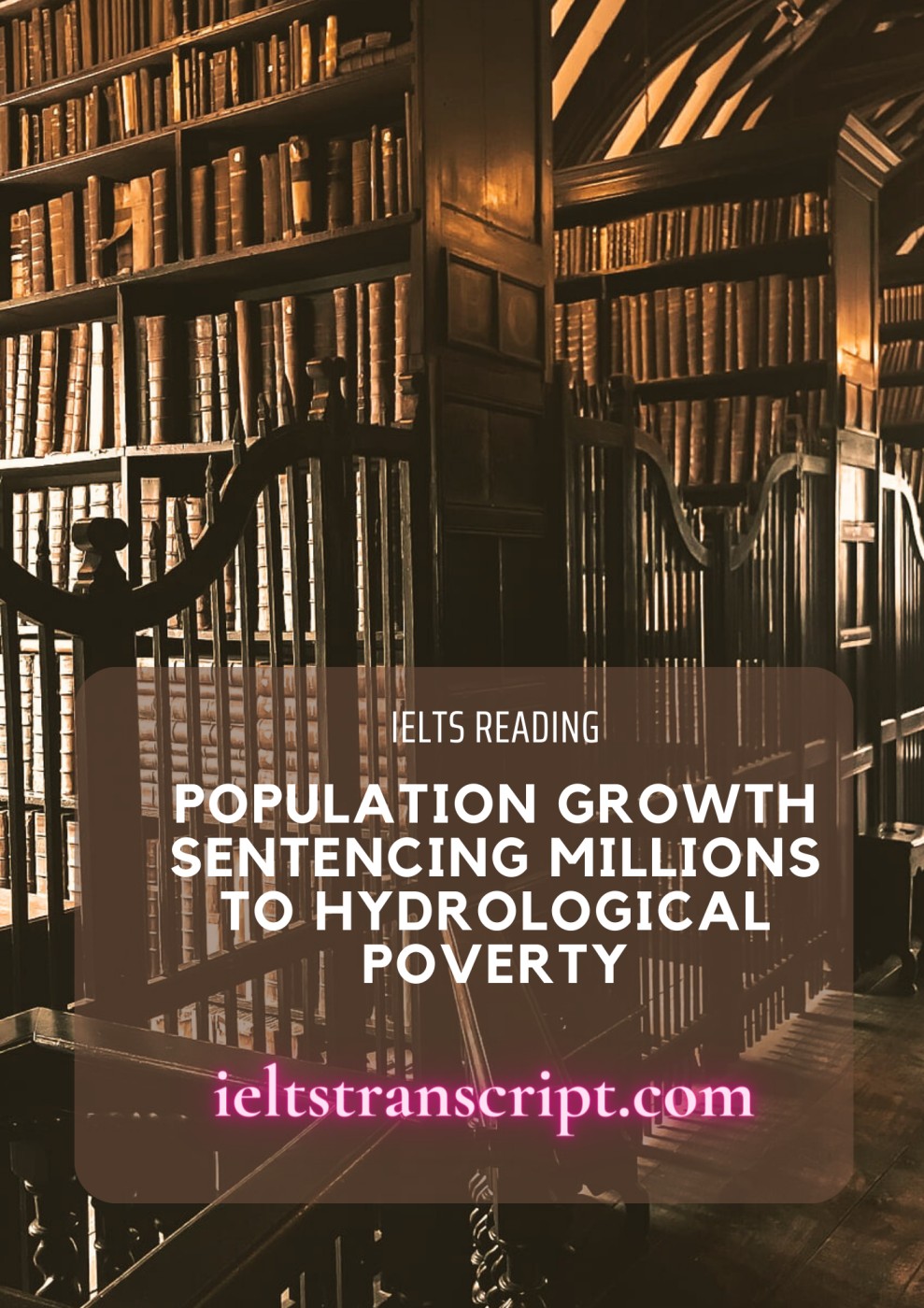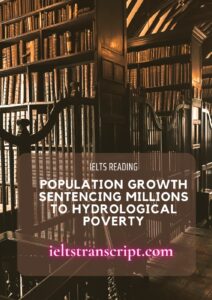- Đối với sản phẩm có giá: Sau khi chúng tôi ghi nhận thông tin đã thanh toán sản phẩm của bạn, sản phẩm sẽ được mở khóa và bạn có thể xem trực tiếp và tải tài liệu sản phẩm.
- Đối với thành viên trả phí: Bạn có thể mua và thanh toán sản phẩm với giá 0đ để tải tài liệu sản phẩm.
- Bạn có thể liên hệ với chúng tôi để được hỗ trợ mở khóa sản phẩm sớm nhất.
Population growth sentencing millions to hydrological poverty
- Chúng tôi chấp nhận các phương thức thanh toán sau đây: Thẻ tín dụng, thẻ ghi nợ, PayPal, chuyển khoản ngân hàng và tiền mặt.
Chúng tôi sẽ không thu thêm phí cho bất kỳ hình thức thanh toán nào.
- Nếu bạn gặp vấn đề về sản phẩm của chúng tôi trong thời gian sử dụng, vui lòng liên hệ với chúng tôi để được hỗ trợ xử lý sớm nhất nhé.
Xem trước mẫu
Population growth sentencing millions to hydrological poverty
A At a time when drought in the United States, Ethiopia, and Afghanistan is in the news, it is easy to forget that far more serious water shortages are emerging as the demand for water in many countries simply outruns the supply. Water tables are now falling on every continent; literally scores of countries are facing water shortages as the tables fall and wells go dry. We live in a water-challenged world, one that is becoming more so each year as 80 million additional people stake their claims to the Earth’s water resources. Unfortunately, nearly all the projected 3 billion people to be added over the next half century will be born in countries that are already experiencing water shortages. Even now, many in these countries lack enough water to drink, to satisfy cleanliness needs, and to produce food.
B By 2050, India is projected to have added 519 million people and China 211 million. Pakistan is projected to have added nearly 200 million, going from 151 million at present to 348 million. Egypt, Iran, and Mexico are slated to increase their populations by more than half by 2050. In these and other water-short countries, population growth is sentencing millions of people to hydro-logical poverty, a local form of poverty that is difficult to escape.
C Even with today’s 6 billion people, the world has a huge water deficit. Using data on over-pumping for China, India, Saudi Arabia, North Africa, and the United States, Sandra Postel, author of Pillar of Sand: Can the Irrigation Miracle Last? reports the annual depletion of aquifer to be at 160 billion cubic meters or 160 billion tons. Using the rule of thumb that it takes 1,000 tons of water to produce 1 ton of grain, this 160-billion-ton water deficit is equal to 160 million tons of grain or one-half the US grain harvest.
D Average world grain consumption is just over 300 kilograms per person per annum – one third of a ton per person per year – and grain reserves directly or indirectly feed 480 million people globally. Stated otherwise, 480 million of the world’s 6 billion people are being fed with grain produced with the unsustainable use of water.
E Over-pumping is a new phenomenon, one largely confined to the last half century. Only since the development of powerful diesel- and electrically-driven pumps have we had the capacity to pull water out of aquifer faster than it is replaced by precipitation. Some 70 percent of the water consumed worldwide, including both that diverted from rivers and that pumped from underground, is used for irrigation, while some 20 percent is used by industry, and 10 percent for residential purposes. In the increasingly intense competition for water among sectors, agriculture almost always loses. The 1,000 tons of water used in India to produce 1 ton of wheat worth perhaps $200 can also be used to expand industrial output by easily $10,000, or 50 times as much. This ratio helps explain why, in the American West, the sale of irrigation water rights by farmers to cities is an almost daily occurrence.
F In addition to population growth, urbanisation and industrialisation also expand the demand for water. As developing country villagers, traditionally reliant on the village well, move to urban high-rise apartment buildings with indoor plumbing, their residential water use can easily triple. Industrialisation takes even more water than urbanisation. Rising affluence in itself generates additional demand for water. As people move up the food chain, consuming more beef, pork, poultry, eggs, and dairy products, they use more grain. A US diet rich in livestock products requires 800 kilograms of grain per person a year, whereas diets in India, dominated by a starchy food staple such as rice, typically need only 200 kilograms. Using four times as much grain per person means using four times as much water.
G Once a localised phenomenon, water
...Để xem được đầy đủ nội dung và tải dữ liệu, bạn phải trở thành thành viên của chúng tôi và trả phí cho tài liệu (nếu có)











